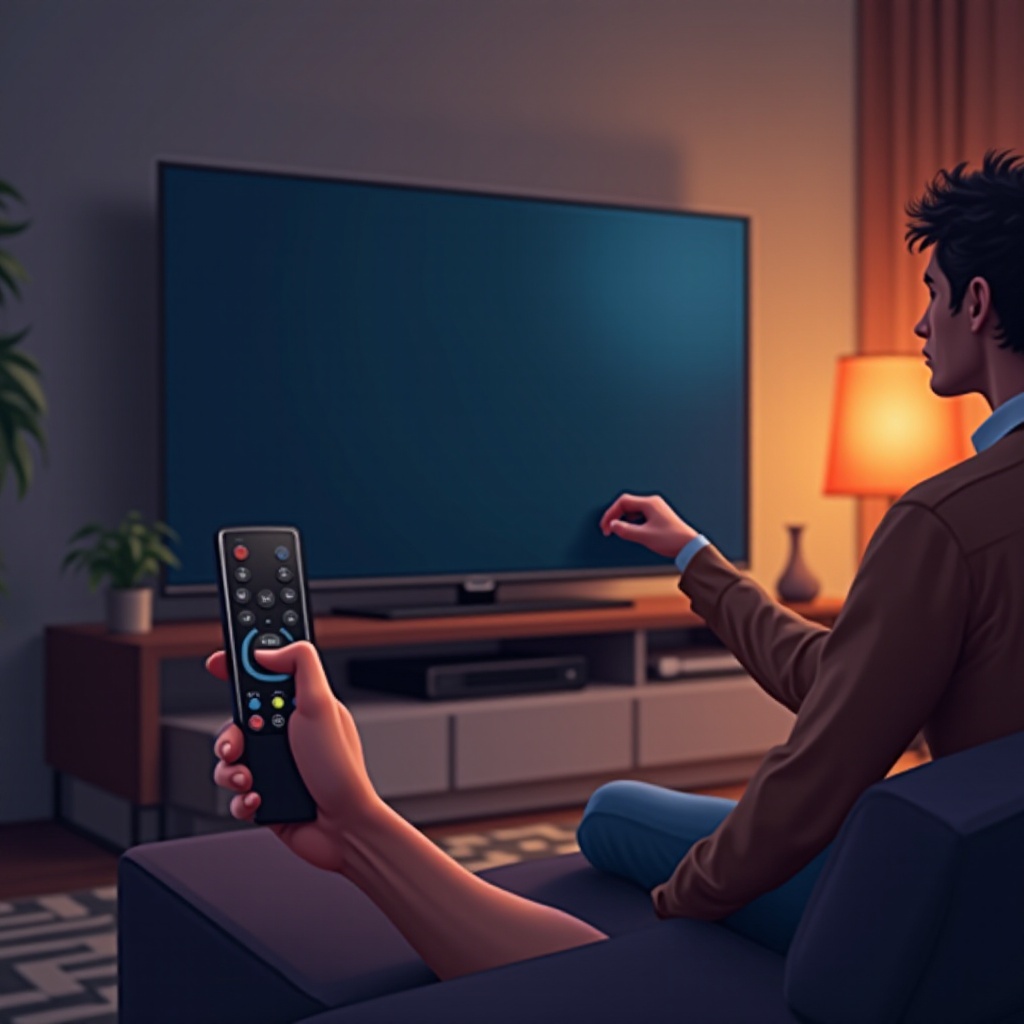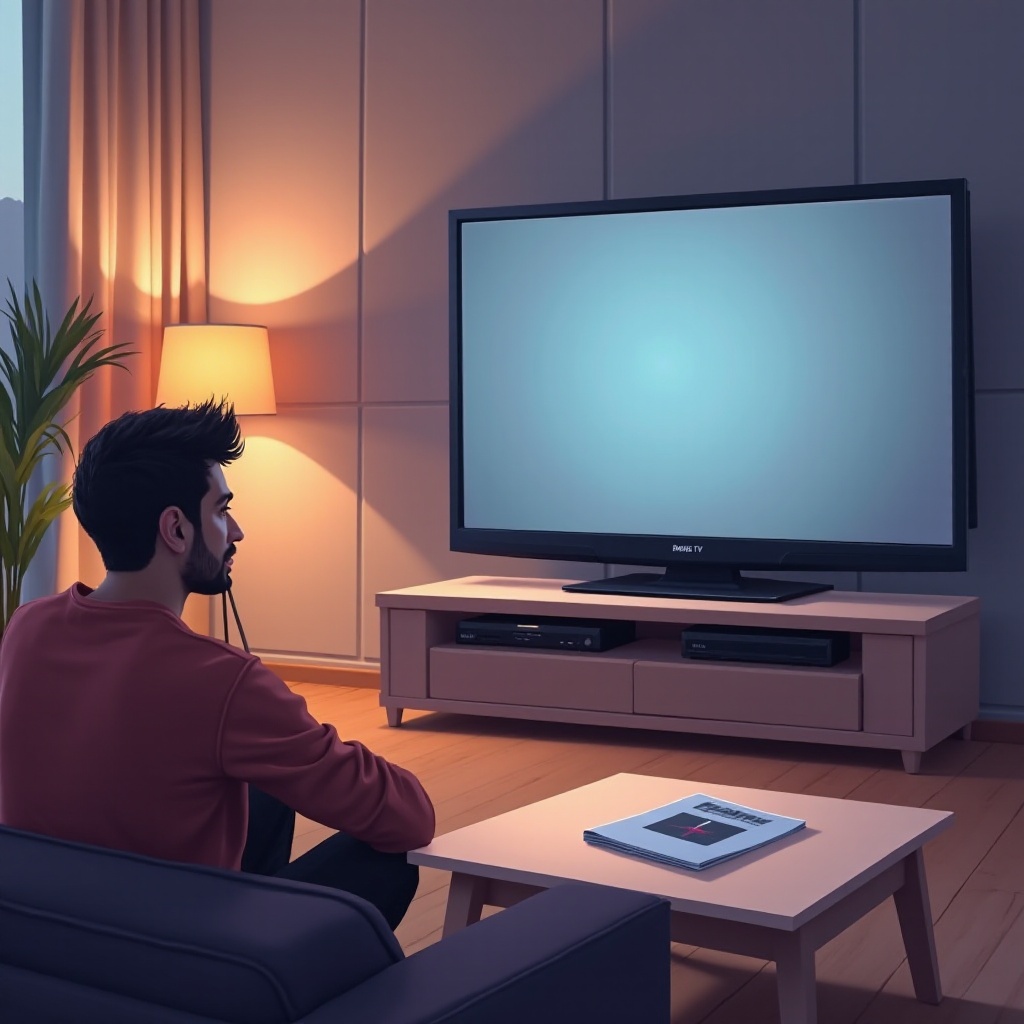
Introduction
Smart TVs have revolutionized the way we consume content, offering a seamless blend of traditional television and streaming services. However, this technological boon can become a source of frustration when your smart TV refuses to power up. Instead of enjoying endless entertainment, you’re left staring at an unresponsive screen. This guide aims to equip you with the knowledge to diagnose and potentially resolve the problem, ensuring a swift return to your favorite shows. Let’s delve into the different facets of troubleshooting to restore your smart TV’s functionality.

Check the Power Source
When faced with a smart TV that won’t turn on, checking the power source is a logical starting point. Ensuring that your TV is properly connected to a functional power source can often unveil the root of the problem.
Verify Power Outlet Functionality
- Test the Outlet: Disconnect your TV and use another electric device, like a lamp, to test the outlet’s functionality. Should the outlet be non-functional, relocate to a different outlet.
- Check the Circuit Breaker: Inspect the circuit breaker to ensure it hasn’t tripped. If it has, resetting it can restore power, resolving the issue.
Inspect Power Cord and Connections
- Check the Cable: Ensure that the power cord is not damaged and firmly connected at both ends. Frayed cords can be responsible for power disruption.
- Use a Different Cable: Substitute the current power cable with a known good one to rule out cable faults.
If power is confirmed, examine whether the issue might lie with your remote control or TV’s manual power button.
Assess Remote Control and Manual Power Options
When your TV remains unresponsive, the issue could stem from your remote control or require manually powering through the TV’s onboard buttons.
Replace Remote Batteries
- Remove Old Batteries: Open the battery compartment and replace the old batteries.
- Install New Batteries: Ensure the correct orientation of the new batteries based on labeled directions in the compartment.
- Test the Remote: With fresh batteries, attempt to power the TV using the remote.
Use the TV’s Physical Power Button
- Locate the Power Button: Consult your TV’s manual if needed to find the power button.
- Press the Button: Hold it for several seconds, observing if the TV responds.
Should the TV still resist powering on, more involved troubleshooting such as power cycling can help reset the system.

Power Cycle Your Smart TV
Power cycling, a form of reboot, can reset your TV’s hardware and resolve inconsistencies.
Step-by-Step Power Cycling Process
- Unplug the TV: Detach the TV from the power supply.
- Press Power Button: With the TV unplugged, press and hold the physical power button for 30 seconds.
- Plug Back In: Reconnect the power cord to the outlet.
- Turn on the TV: Use the remote or physical button to attempt startup.
If power cycling is futile, explore potential software-related disruptions.
Update and Reset the Software
Software glitches are a common cause of operational hitches in smart TVs. Checking for updates or performing a reset can rectify these issues.
Check for Software Updates
- Access Menu: Use your remote to enter the TV’s main menu.
- Visit Settings: Navigate to ‘System’ or ‘Software Update’.
- Select Update: Follow the instructions to install any updates.
Perform a Factory Reset
- Navigate to Settings: Open the settings.
- Select Reset: Opt for ‘Factory Reset’ or equivalent, confirming the selection.
- Complete the Process: Allow the TV to restart, returning to default settings.
Factory resets resolve many software problems but clear personal settings and data. If issues persist after, investigate for possible hardware damage.
Examine Physical Damage and Internal Components
After ruling out basic fixes, inspecting the physical state and internal components might illuminate the issue.
Look for Visible External Damage
- Examine the Exterior: Identify any apparent damage such as cracks or dents.
- Assess the Screen: Check if screen damage could impair the TV’s operation.
Consider Internal Component Issues
- Research Common Failures: Use your TV’s model number to explore frequent issues related to internal components.
- Consult a Professional: Internal problems often require expert diagnosis.
If physical inspection yields no visible issues, seeking help from manufacturer support might be beneficial.
Manufacturer and Support Resources
When self-troubleshooting fails, manufacturer support can provide specific guidance tailored to your model.
Refer to User Manual
- Review Troubleshooting Sections: Consult the user manual for advice tailored to your TV model.
- Follow Detailed Instructions: See through the manual’s suggestions for more advanced troubleshooting techniques.
Contacting Customer Support
- Find Contact Info: Obtain customer support details from the manual or online.
- Prepare Necessary Details: Ready your TV’s model and serial numbers.
- Explain the Issue Clearly: Convey a clear issue description along with attempted fixes.
Combining manual instructions with professional support can often resolve challenging problems, leading to fixing or recommended repairs.

Conclusion
Resolving persistent smart TV problems requires a systematic troubleshooting regimen starting from basic power checks to potentially seeking professional help. Addressing power, remote issues, software updates, or consulting manufacturer resources contributes to solving most common problems effectively. Step-by-step troubleshooting offers a practical approach to restoring your TV’s operability.
Frequently Asked Questions
Why won’t my Smart TV turn on even though the power light is on?
This could indicate a display issue or an internal fault. Try checking for updates or a factory reset. Professional repair may be needed if problems persist.
How can I tell if the TV remote is working properly?
Replace the batteries and ensure correct installation. You can also test the remote by using it on other devices or checking for a visible LED light on the remote.
What should I do if my Smart TV is still under warranty?
Contact the manufacturer or authorized service provider for assistance with repairs or replacements, keeping your proof of purchase handy.
